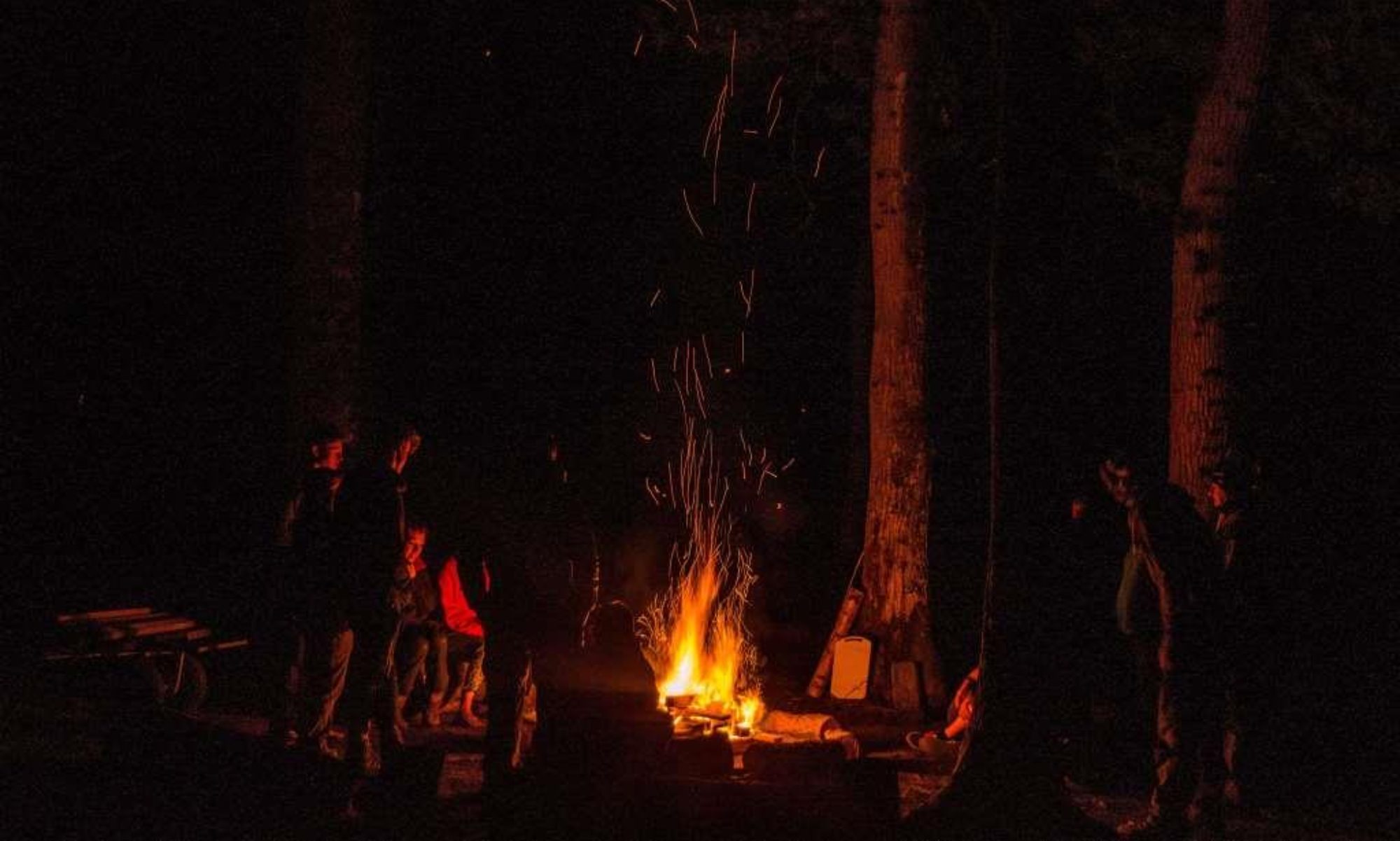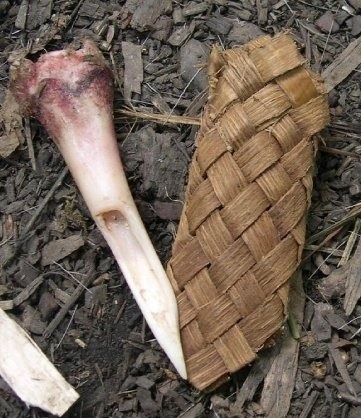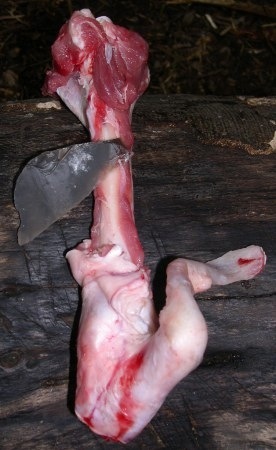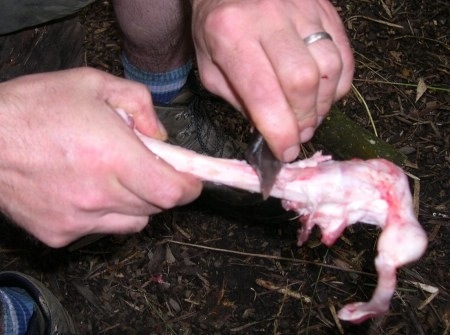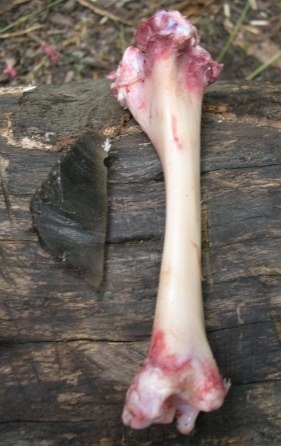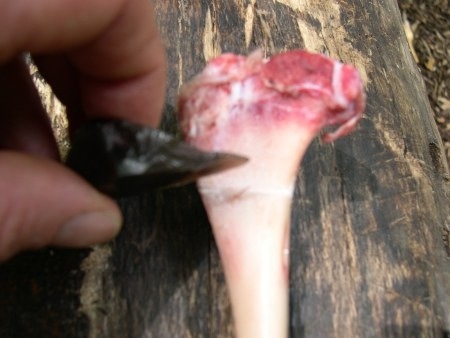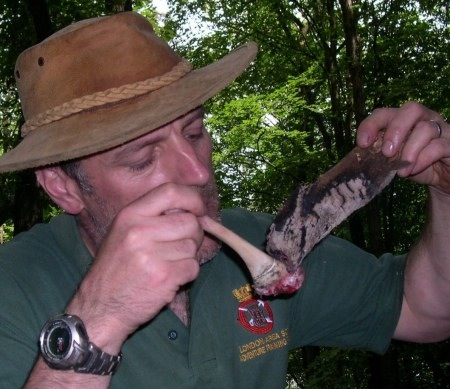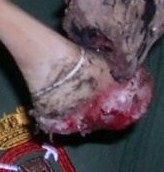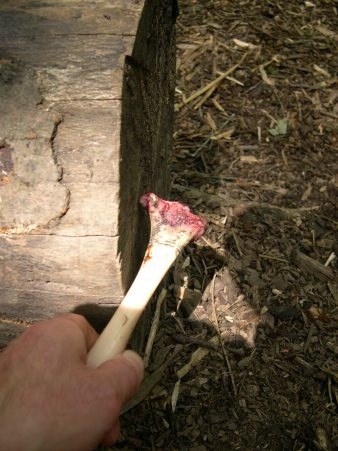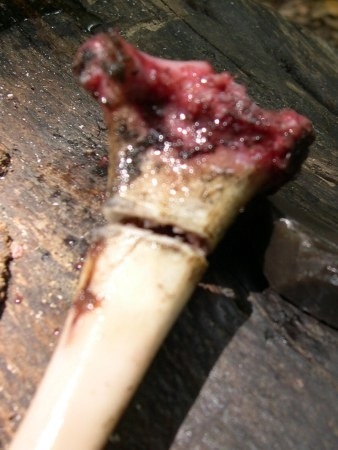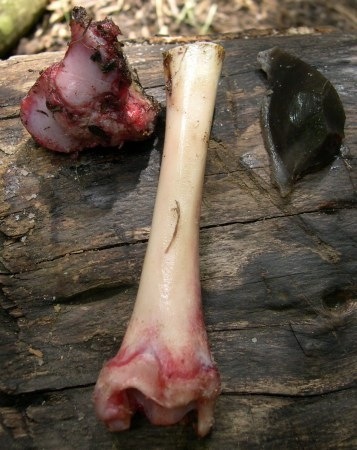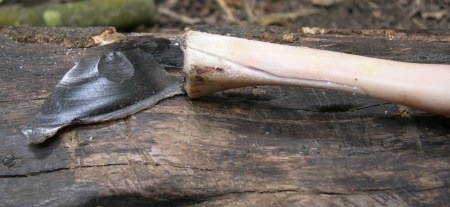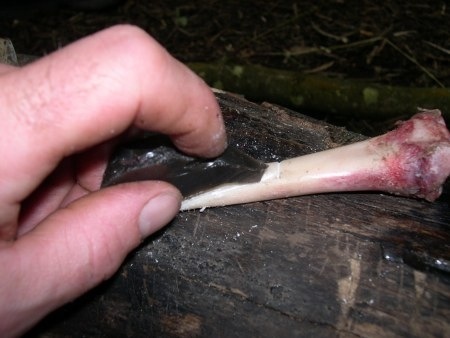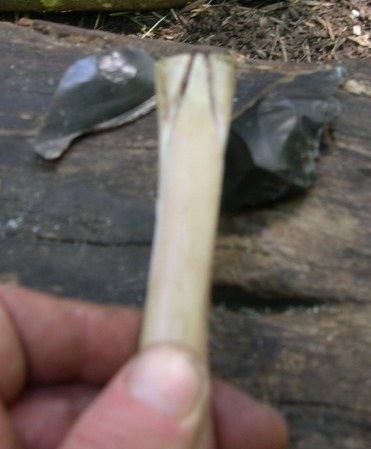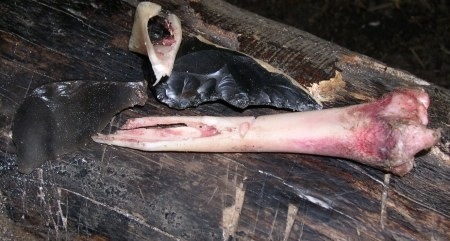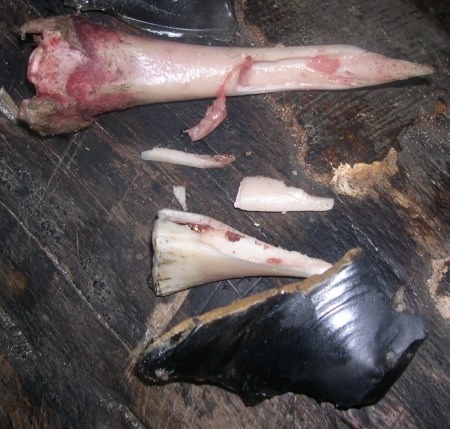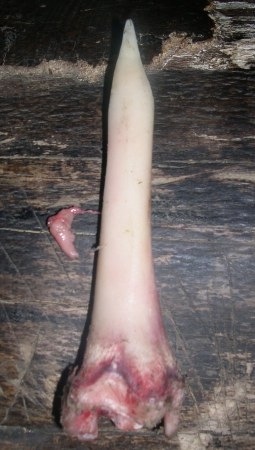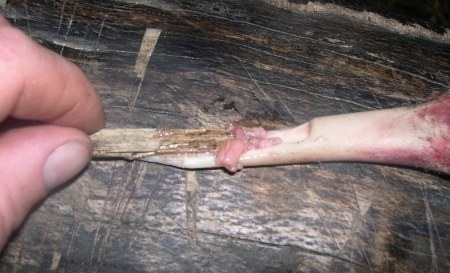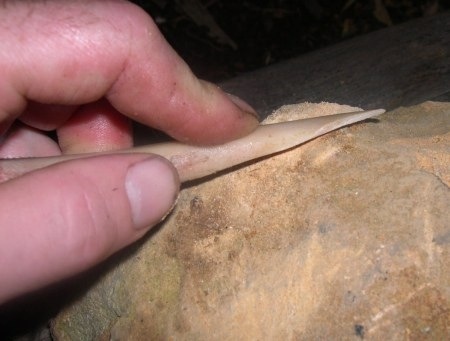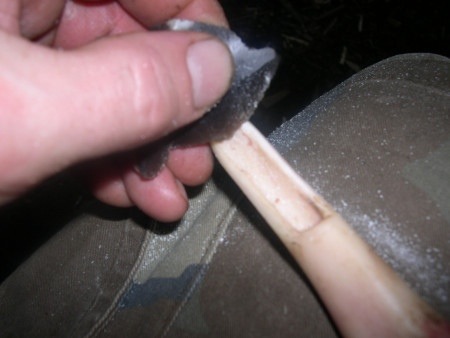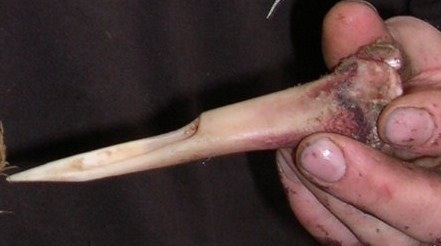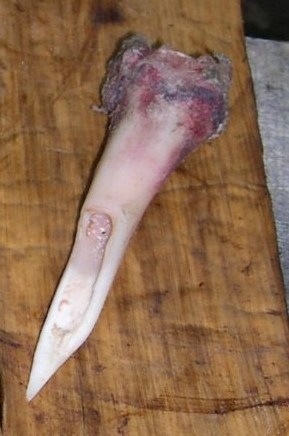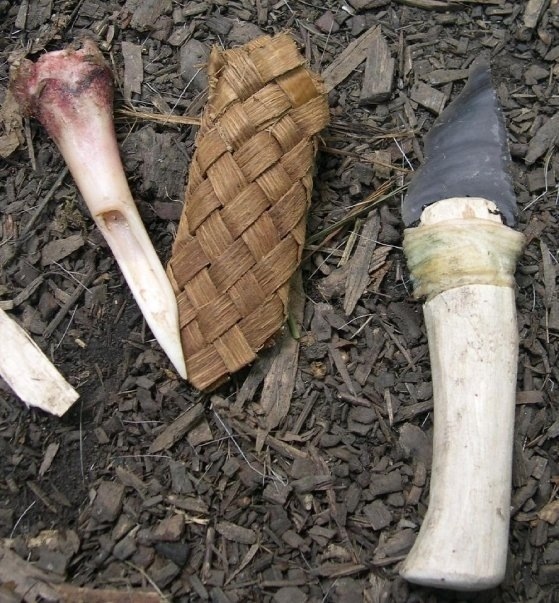This How To…. lays out some simple steps to make a bark sheath for a knife. I have also used this method to make a quiver for my arrows and with a sightly different method you can easily make containers.
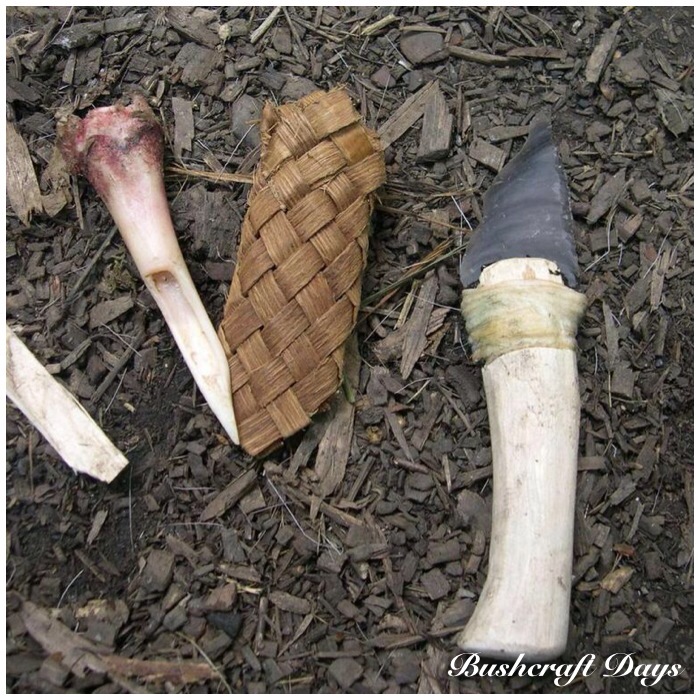
I took these pictures in 2009 when I was on the Woodcraft School Primitive Technology course. The sheath was made using only primitive tools as required by the course. To do this I made for myself a flint knife, flint adze, some discoidal flint knives and also used the bone bodkin that I showed you how to make in the previous post. For more modern methods I would say you could do this job with a small saw and a small knife.
I started the project by selecting a suitable Sweet Chestnut (Castanea sativa) limb from a coppice stool to take down. After checking the tops for any dead wood I started to clear away the undergrowth using some flint. Clearing the undergrowth away ensured a safe working area around the limb. I used a large sharp piece of flint for this. Also I made sure I had clear exit routes around the limb I could use when it came down.
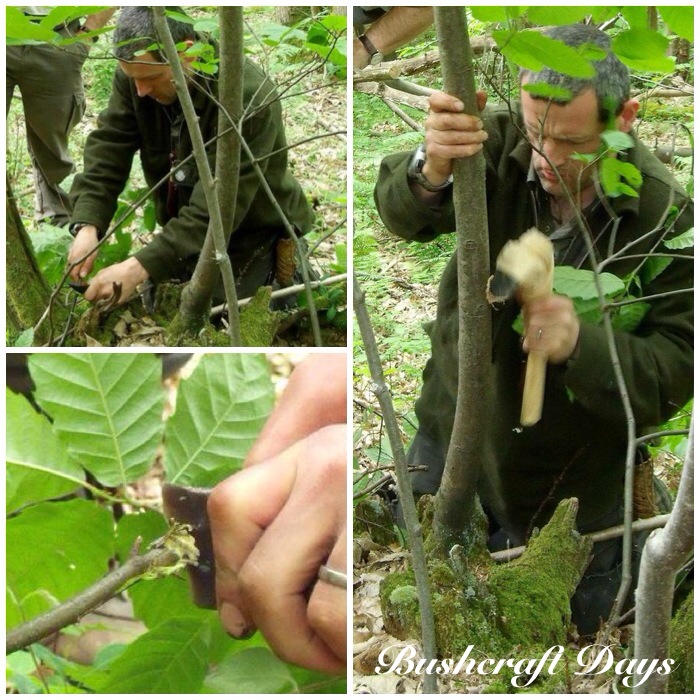
I had created for the job a Flint Adze. This is a piece of worked flint attached to a handle with rawhide. Unlike traditional tree felling where a wedge is created and then a back cut made I am made a rosette cut all around the tree using short chopping motions. You can see the rosette cut appearing in these pictures. The small branch you can see in the foreground got in my way so I cut this down.
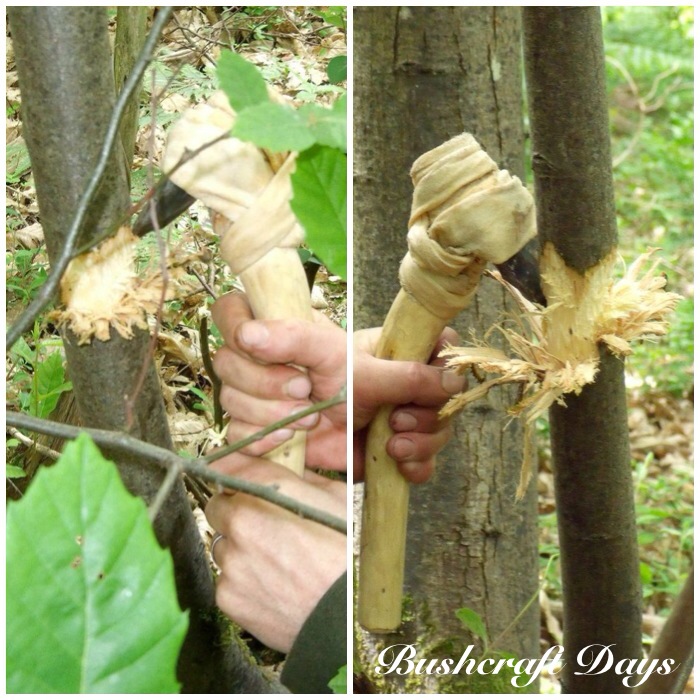
You can see that the Adze creates tears in the wood but is very effective in cutting into it. As I got into the heartwood I had to support the limb as I did not want it to fall uncontrollably and eventually I was able to let the limb to fall under control. I did not need to back out of the coppice stool as the limb was light enough to control. Had it been any heavier, my cleared exit routes would have come into play.
Traditionally the stump would have been left like this. I however sawed the stump cleanly at the base. If a stump is cleanly cut (with a little angle) then it has less chance of getting infected and will eventually have new shoots grow out of it.
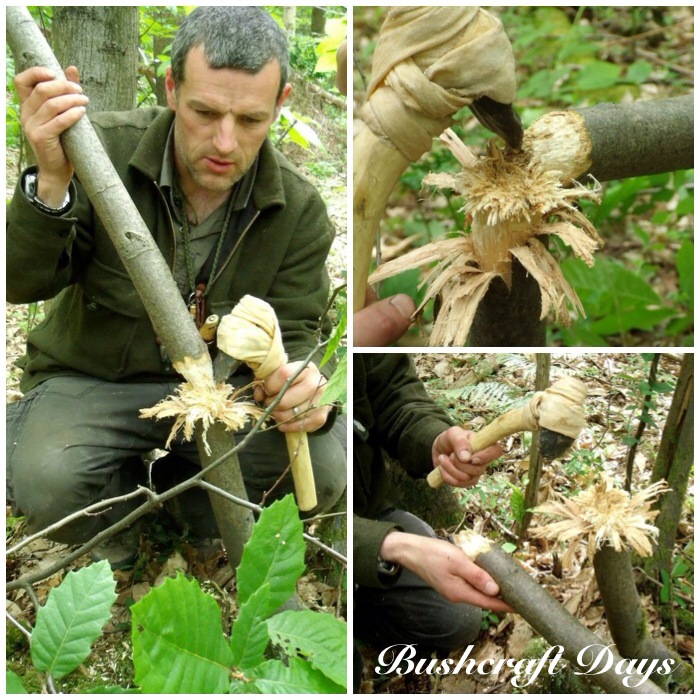
Using the Adze in a safe manner away from my body I trimmed off all the brash from the limb.
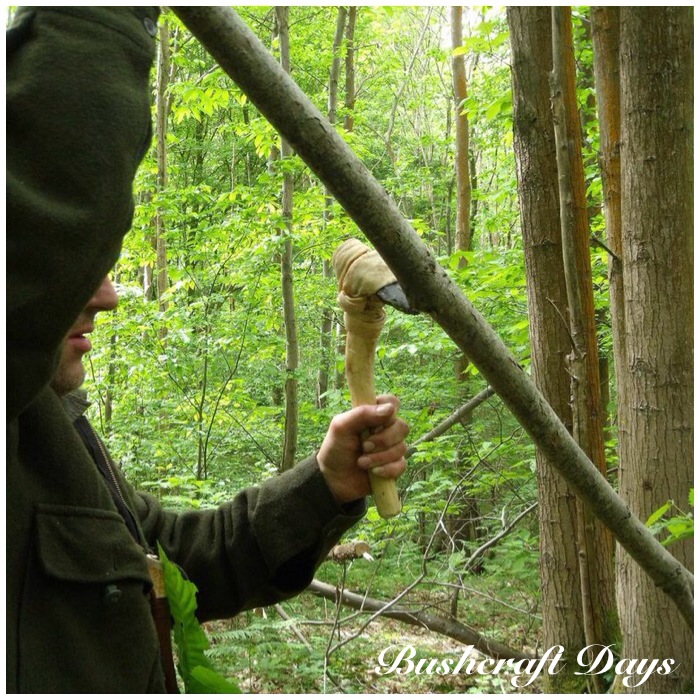
Using the flint that I had cleared the undergrowth with I scraped off all the outer bark of the limb as this is too brittle to work with. All I wanted to use was the inner bark. My friend Paul held the limb to secure it: this speeded up the process as I could use both hands.
I scored a line down the limb through the inner bark with my flint and also scored a line around the limb at the top and the bottom. Then, using a small piece of wood I’d found on the ground, I peeled away the inner bark from the limb. This was done in April so the sap was rising, making the debarking of the limb very easy.
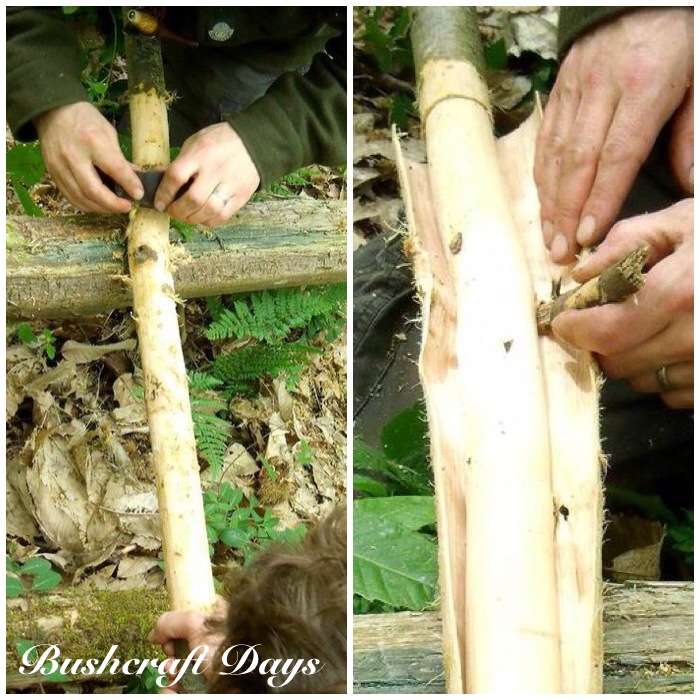
The tools I used for the job:
1) Adze
2) Flint
3) Piece of wood
I cut a further piece of bark off the limb as well.
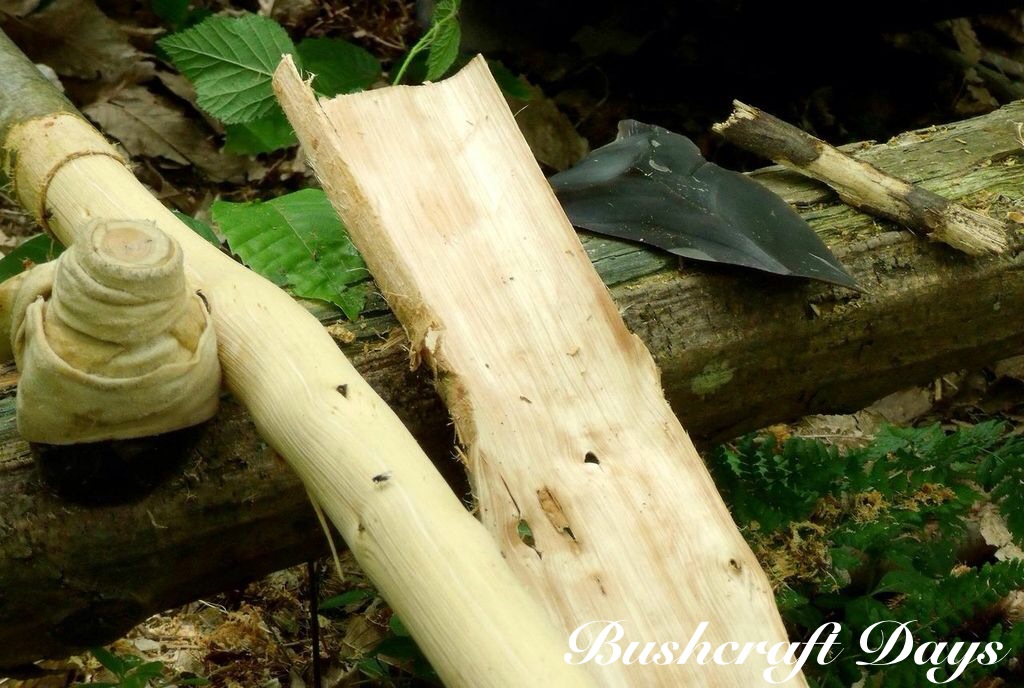
I left the bark to dry out overnight and then re-wet it the next day before cutting it into strips. If you use the bark straightaway after harvesting it, anything you weave will become loose as the bark will shrink slightly as it dries. This shrinkage does not happen again if you let it dry out first then just re-wet it to make it supple enough to work.
To cut the strips I had a flint knife prepared for this.
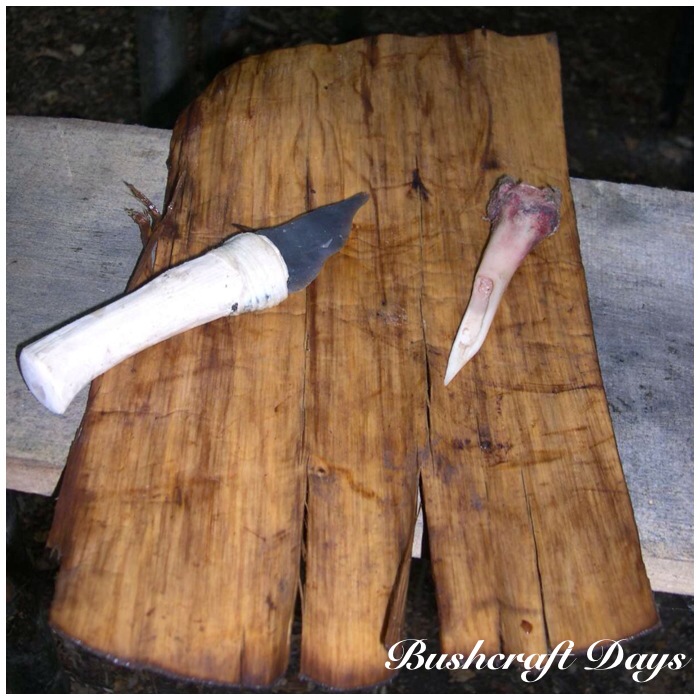
I cut the strips by eye only but I am sure you could rig up a worktop to cut consistently wide strips. The good strips are on the right and the offcuts on the left.
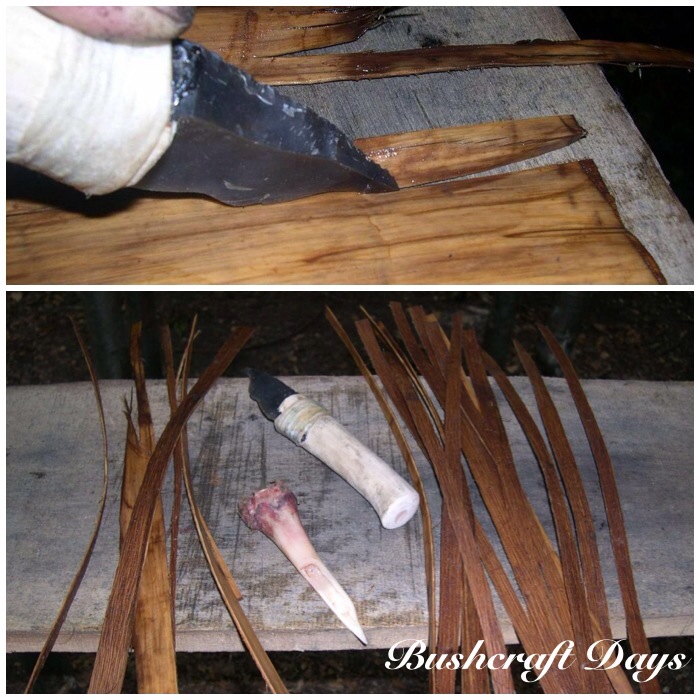
With practice you will be able to gauge how many strips you’ll need for your size of sheath. This was a small sheath so I estimated 6 strips.
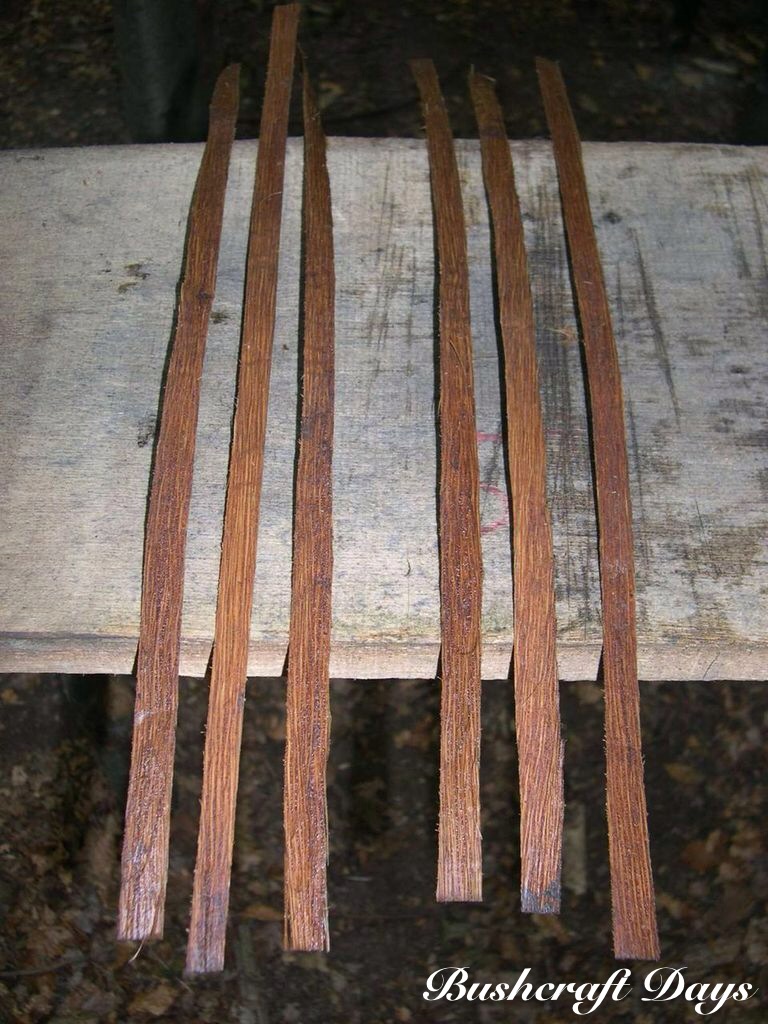
Firstly fold all your strips in half with the inner part of the bark showing as it is the smoother side.
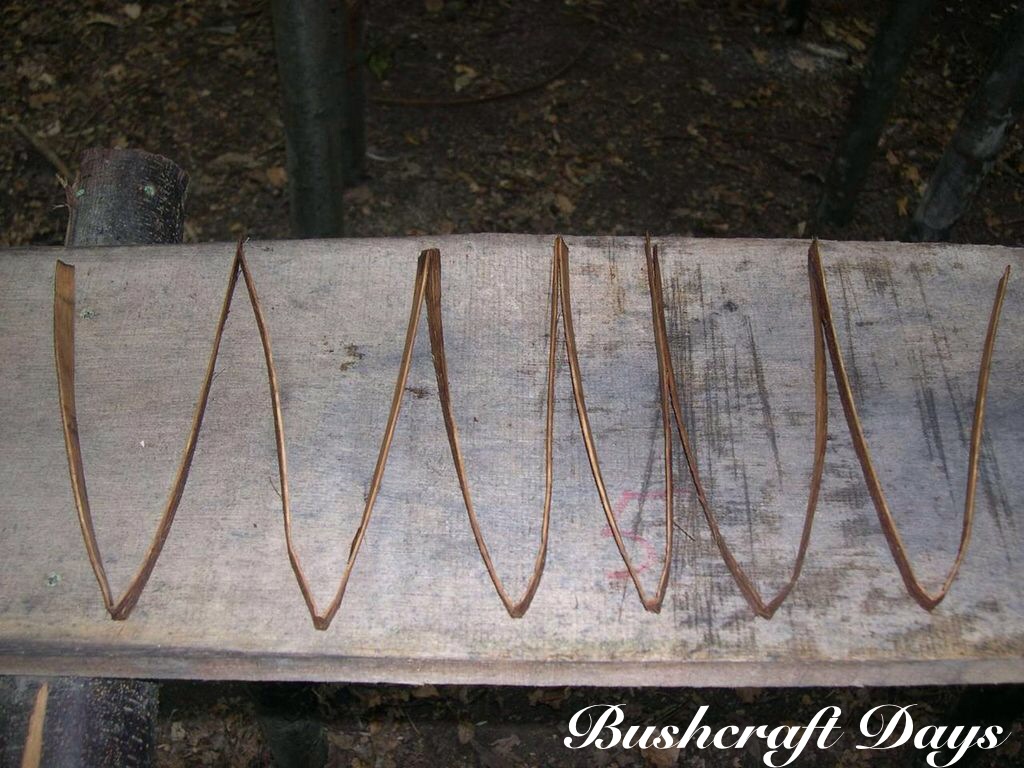
I have documented the first 12 steps of the weave in the next 3 pictures. Each numbered bullet point relates to a numbered picture below.
1) Lock the right hand strip onto the top half of the left hand strip.
2) Lock the next right hand strip onto the bottom half of the left hand strip.
3) Lock the third right hand strip onto the top half of the left hand strip.
4) Lock the second left hand strip onto the top of the first right hand strip and weave through the other strips.
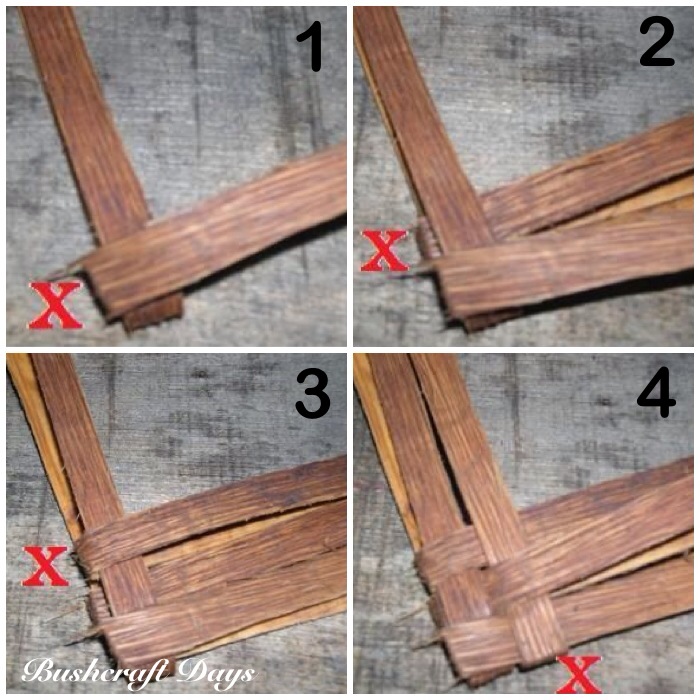
5) Lock the third left hand strip onto the bottom of the first right hand strip and weave it through the other strips. The ‘point’ of the sheath is now complete.
6) Fold back the top of the first left hand strip.
7) Fold the bottom of the first left hand strip diagonally over the other left hand strips.
8) Then flip back up the top of the first left hand strip.
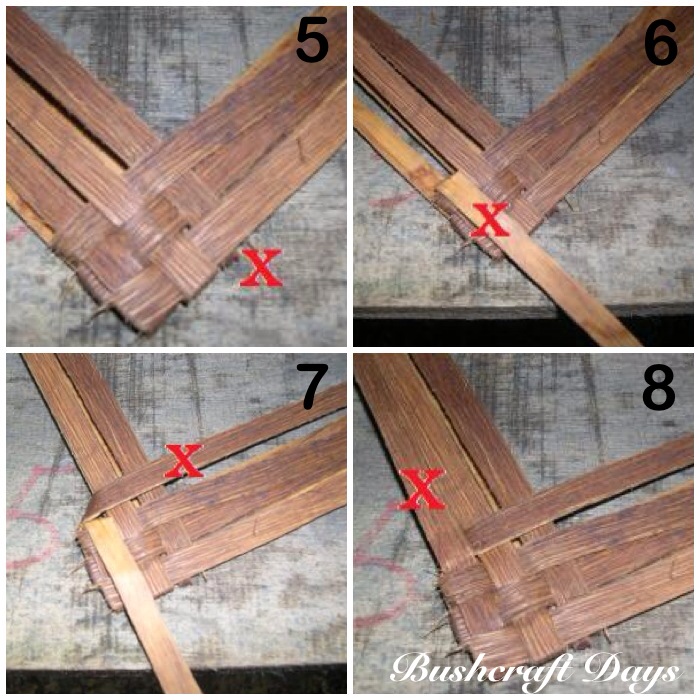
9) Lock the next right hand strip onto the bottom half of the left hand strip.
10) Flip the whole sheath over. There should be a single strip on the right now.
11) Now fold the bottom right strip diagonally over the other right hand strips and weave it in.
12) Starting again on the left hand side keep repeating the whole process.
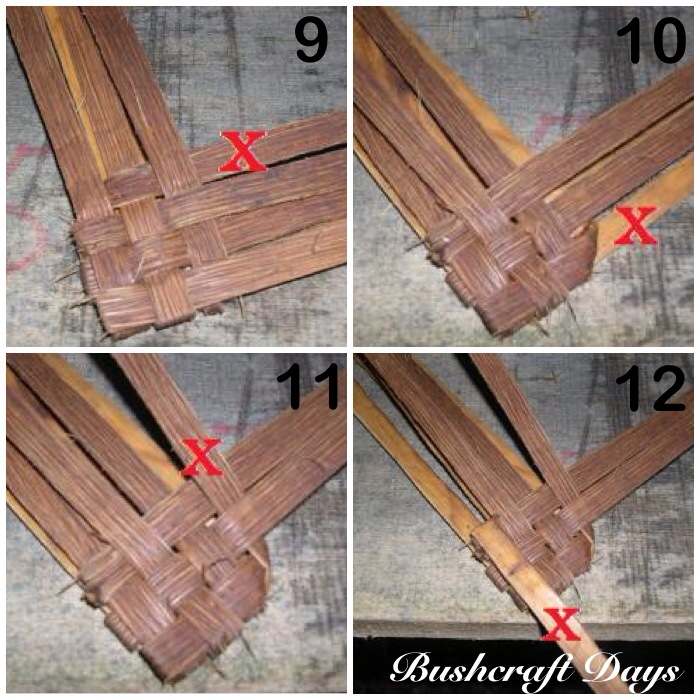
Soon your sheath will take shape.
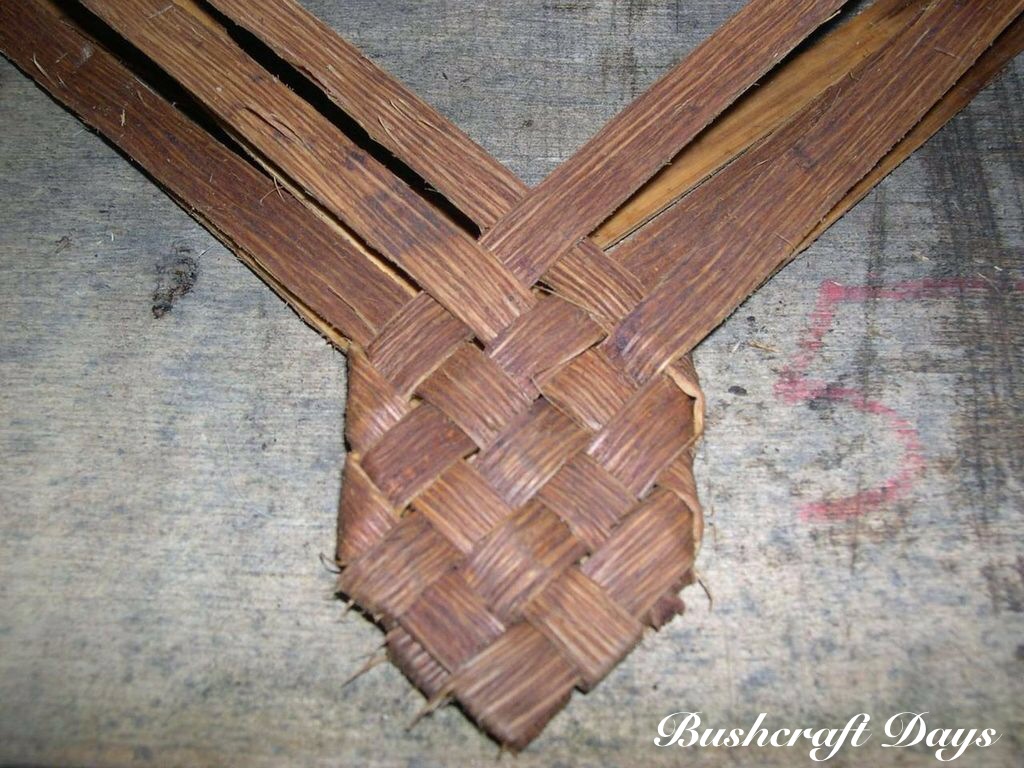
Keep going with the weave and stop when you have enough to securely hold whatever will be kept in it.
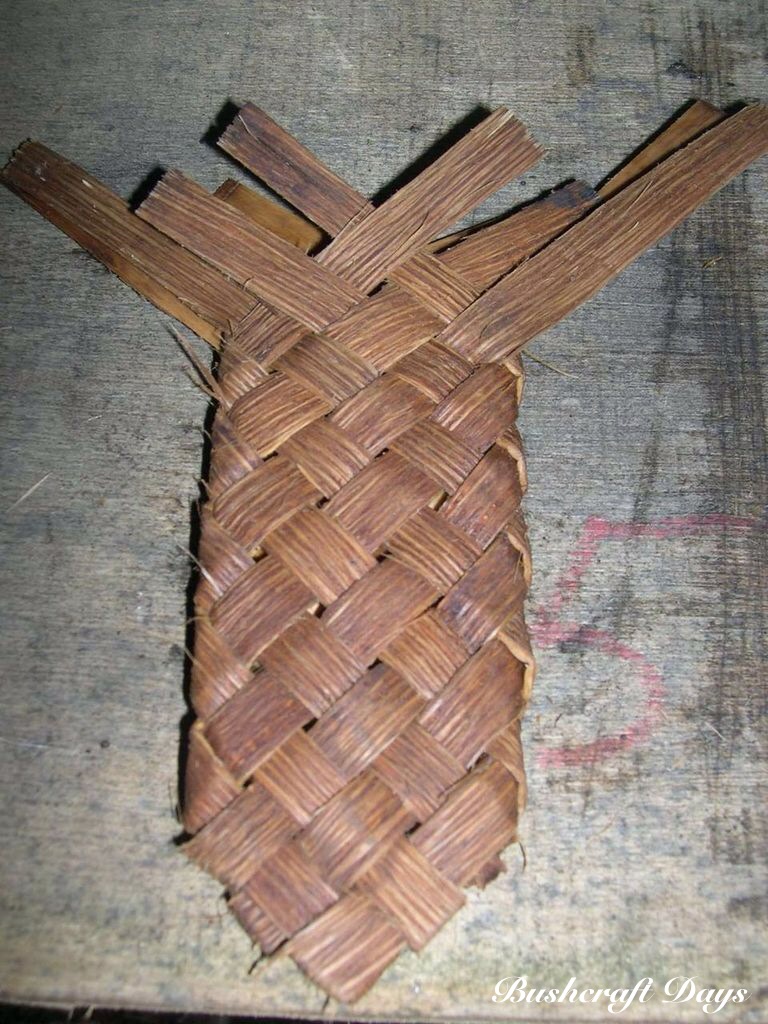
The top can seem a little bit tricky at first but all you need to do is turn the ends back on themselves and weave them into the sheath. Just tuck each end in as neatly as you can: it’s tricky as each end will be different, you might need to experiment.
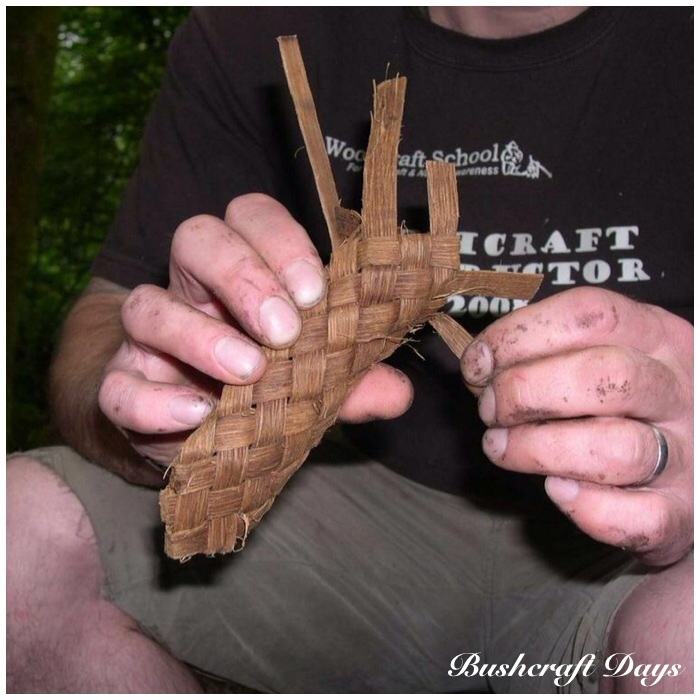
When you have closed the top off, trim all the ends so that you cannot see where the weave ends.
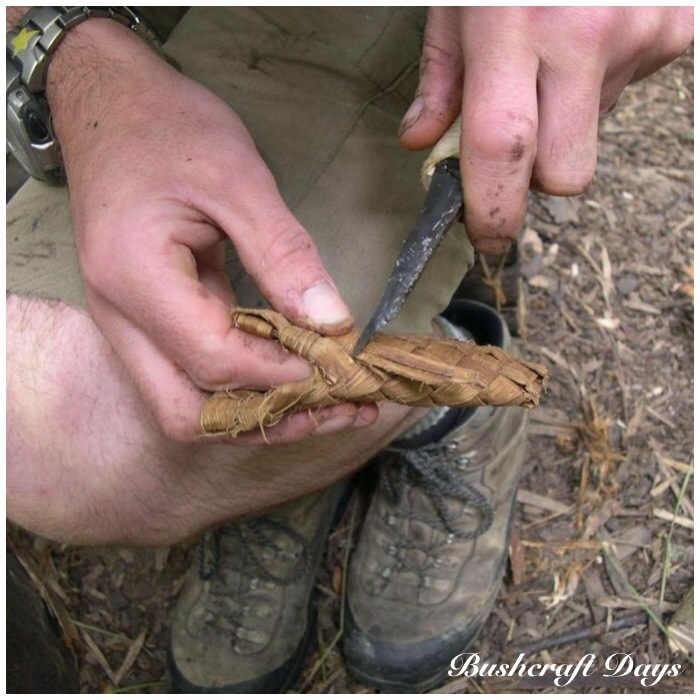
All the ends were trimmed so that the ends were hidden by the weave. The sheath is ready for a dangler strap now.

I used some raw hide I had left over from making a bag. I wet it to make it more pliable and then rolled it in my hand.
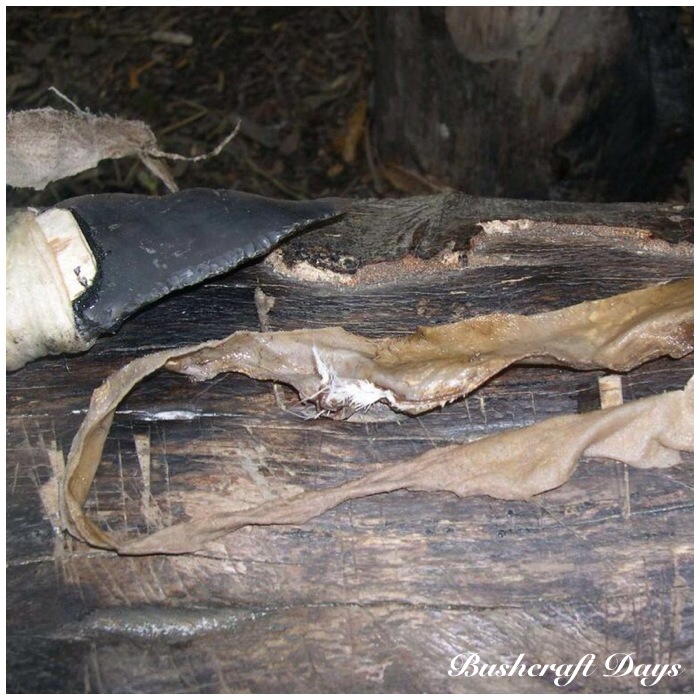
The bodkin I had made earlier came in handy here to make a gap in the weave. I then used a small stick to push the rawhide into the gap made by the bodkin.
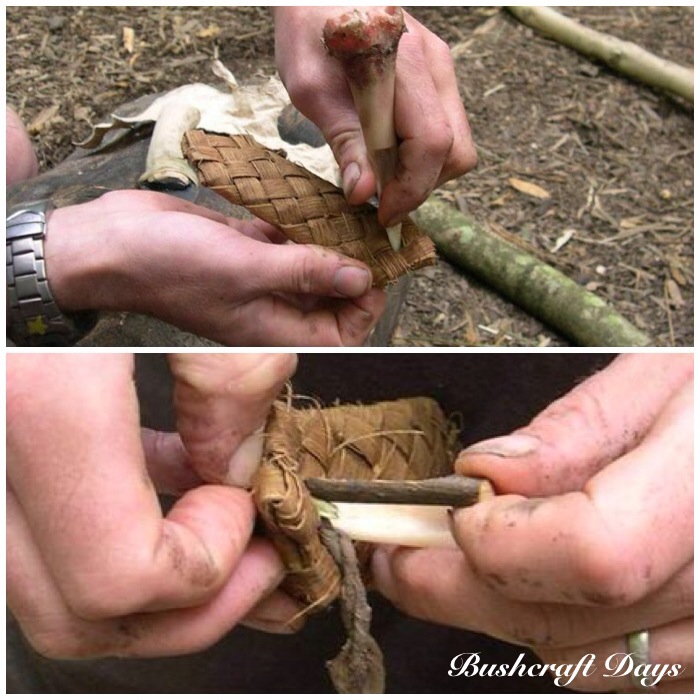
Attach it as you like and it is ready. I think I used a simple Larks Foot knot here.
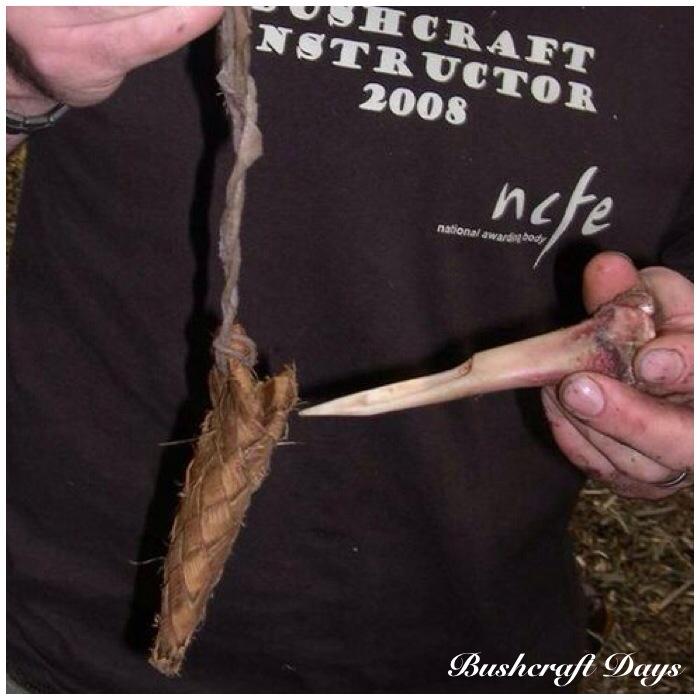
This sheath completed my primitive belt order (the smallest one on the right).
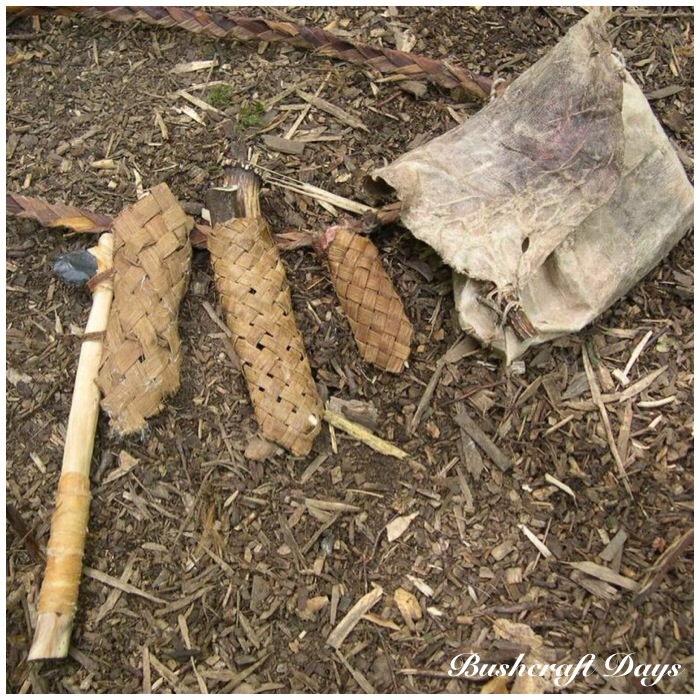
This type of weaving can make some very useful items. I have been using the quiver on a regular basis since 2008 and it shows no sign of wear and tear.
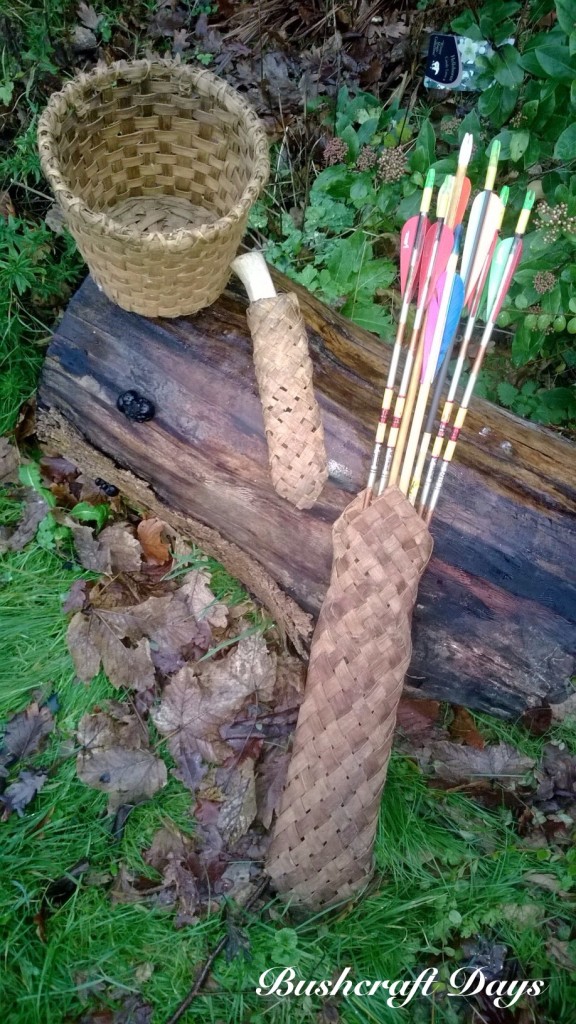
A How To…. on making the bone knife can be found here – Primitive Skills – Bone Knife/Bodkin.
Good luck and enjoy experimenting.
George
